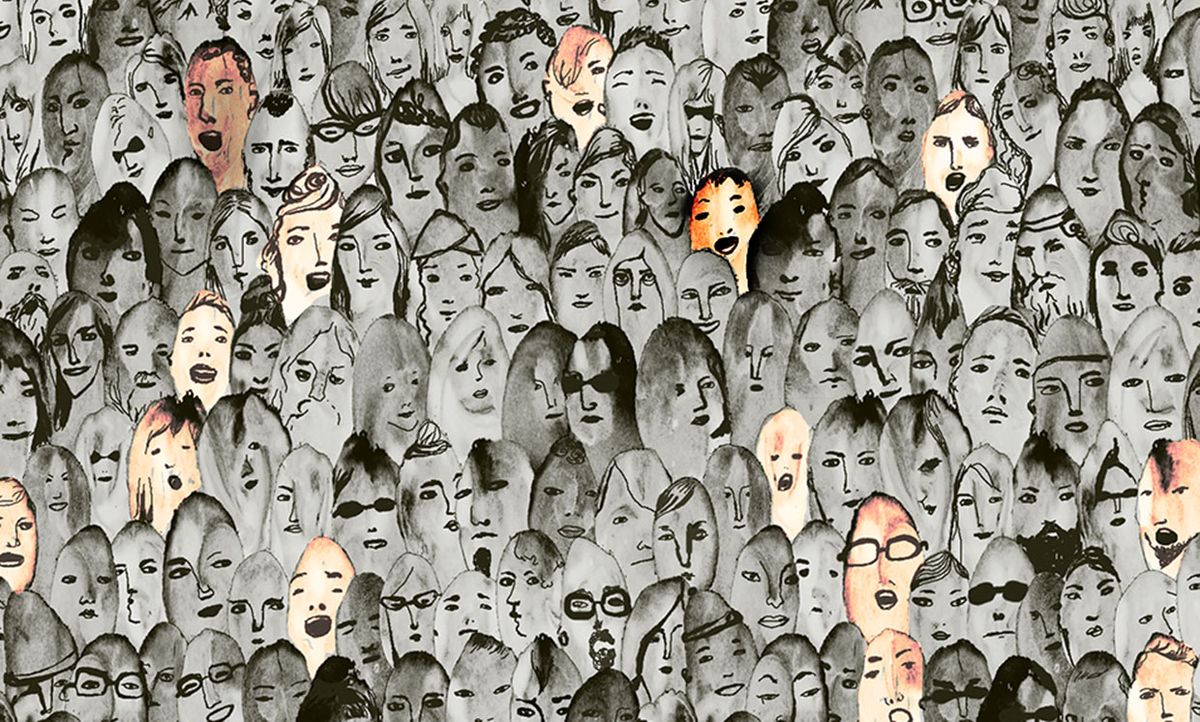For many people, it’s easy to get caught up in the throes of political passion. But when political tensions reach a boiling point, this can have profound consequences, such as when one person was killed and dozens injured during a rally in Charlottesville, Virginia in 2017. Predicting when a political rally may get out of hand could help organizers or law enforcement know when to intervene.
Models could be useful for predicting crowd behavior under such scenarios, yet the emotions that ripple through a crowd—enamoring some people and repulsing others—is a highly complex phenomenon to capture. In a recent study in IEEE Transactions on Computational Social Systems, Mingliang Xu and colleagues at Zhengzhou University developed a model that brings us one step closer to predicting social contagion that occurs at political rallies.
“Group conflicts are gradually becoming a more severe potential threat to public safety, especially for people with different political beliefs. So we decided to model social contagion under political rally circumstances,” explains Xu, whose team received funding for the research through China’s National Key R&D Program.
They built upon an existing model originally designed to study how infectious disease spreads, called the Susceptible-Infected-Recovered (SIR) model. However, to better adapt the model for political rallies, the researchers also incorporated scales that account for individual personalities and ranges of emotional infection.
To account for individual personality, the researchers used a standard method for classifying traits, called OCEAN, which captures a person’s openness, conscientiousness, extroversion, agreeableness, and neuroticism. In particular, extroversion was used to determine the magnitude of an individual’s emotional transmission to other people, while the empathy of an individual influences their ability to receive emotions from others.
In simulations of people at a political rally, individuals become susceptible to the influence of the organizer and of other individuals present. Based on each individual’s personality, the model assigns emotional values based on two different perspectives: in support of the organizer’s the viewpoint or opposing it. In this way, the model can simulate the flow of emotions through a crowd, and predict which individuals will be drawn into the rally and which will walk away from the event.
“We compare our experimental results with the real political rally to verify the effectiveness of our emotional infection approach. By contrasting, we can see that the effect of our simulation of crowd behavior is generally similar to the real situation,” says Wu.
A major, outstanding limitation of the model now is that it cannot capture the true personality of people present at a real-life rally. And different political groups attract people with different personality types. Wu says, “In the future, we plan to improve the accuracy of initial parameters by using some specialized data measurement or data learning methods, such as wearable devices.”
Of course, further improvements to this model also raise ethical concerns, for example if a government used the tool to monitor rallies and ultimately interfered with the events. As with so many technologies, this model acts as a double-edged sword—offering both a means to potentially save lives and a tool to facilitate political suppression.
Michelle Hampson is a freelance writer based in Halifax. She frequently contributes to Spectrum's Journal Watch coverage, which highlights newsworthy studies published in IEEE journals.



